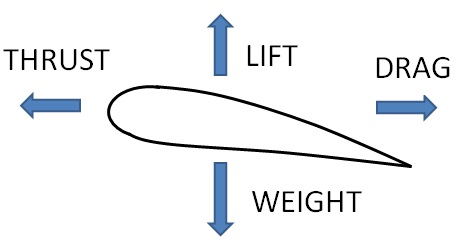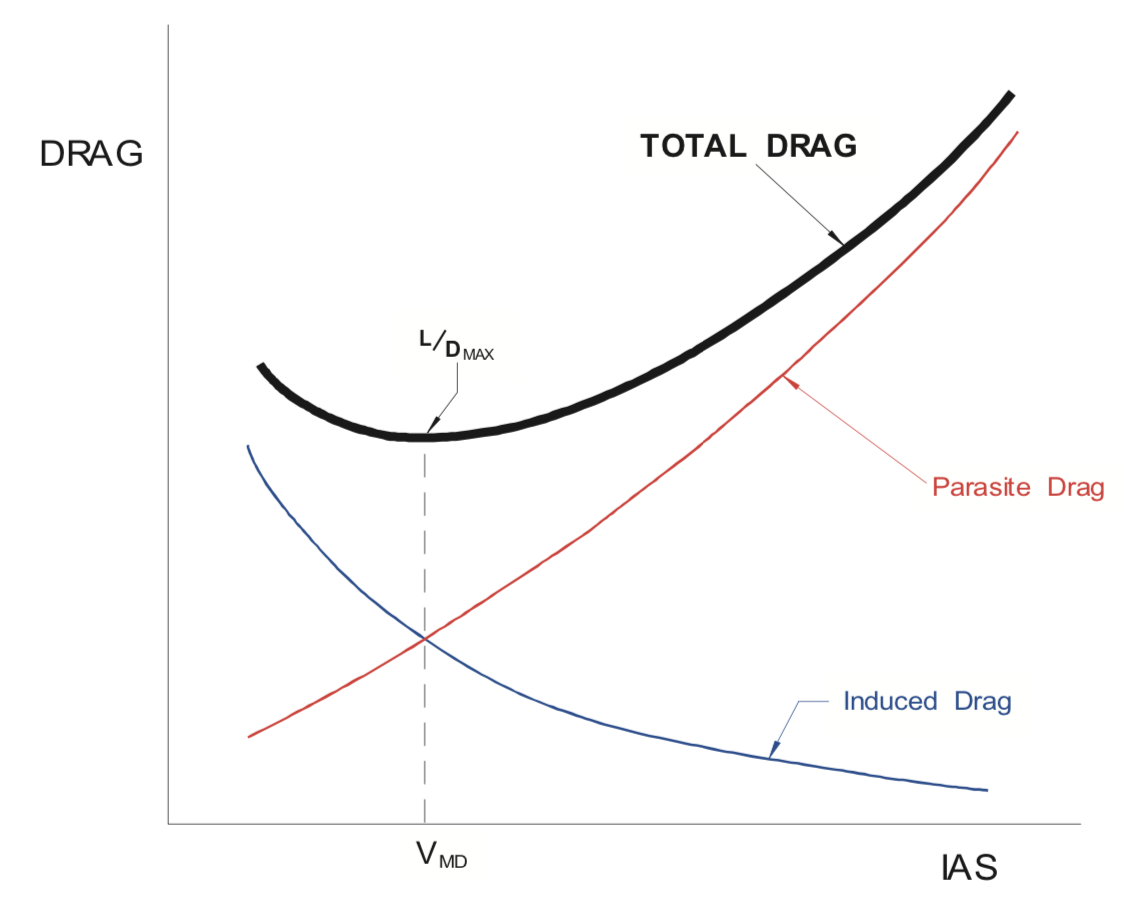¶ Introduction
As we know from physics courses, drag is a force acting opposite to the relative motion of any object moving with respect to a surrounding fluid or gas. This is an important concept that helps us to understand aircraft performance and behavior in the air.
¶ Description
There are 4 basic forces of flight: Lift, Weight, Thrust and Drag. Drag is the aerodynamic force that opposes an aircraft's motion through the air. It is generated by every part of the airplane. It resists the forward motion of the aircraft and acts parallel to and in the same direction as the relative airflow (in the opposite direction to the flight path).

¶ Drag types
There are two basic types: parasite drag and induced drag. The first is called parasite drag because it in no way functions to aid flight, while the second, induced drag, is a result of an airfoil developing lift.
¶ Parasite drag
Parasite drag is independent of lift generation.
It is comprised of all the forces that work to slow an aircraft's movement. There are 3 types of parasite drag: form drag, interference drag and skin friction drag.
- Form drag is the portion of parasite drag generated by the aircraft due to its shape and airflow around it. Examples include the engine cowlings, antennas and the aerodynamic shape of other components.
- Interference drag comes from the intersection of airstreams that creates eddy currents, turbulence, or restricts smooth airflow. For example, the intersection of the wing and the fuselage at the wing root has significant interference drag. Air flowing around the fuselage collides with air flowing over the wing, merging into a current of air different from the two original currents. The most interference drag is observed when two surfaces meet at perpendicular angles.
- Skin friction drag is the aerodynamic resistance due to the contact of moving air with the surface of an aircraft.
¶ Factors affecting parasite drag
Indicated airspeed
Parasite drag varies directly with the square of the Indicated airspeed (IAS). If IAS is doubled, the parasite drag will be four times greater- if IAS is halved, the parasite drag will be one quarter of its previous value.
Configuration
Parasite drag varies directly in proportion to the frontal area presented to the airflow; this is known as 'Parasite area'. If flaps are deployed, the undercarriage lowered, speed brakes selected or roll control spoilers operated, 'Parasite area' is increased and parasite drag will increase.
Airframe Contamination
Contamination by ice, frost, snow, mud or slush will increase the parasite drag coefficient and, in the case of severe airframe icing, the parasite area.
¶ Induced drag
Induced drag is the result of lift generation.
Induced drag is an undesirable by-product of lift. Wing tip vortices modify upwash and downwash in the vicinity of the wing which produces a rearward component to the lift vector.
Induced drag is inherent whenever an airfoil is producing lift and, in fact, this type of drag is inseparable from the production of lift. Consequently, it is always present if lift is produced.
¶ Factors affecting induced drag
The size of the lift force
Induced drag is a component of the lift force: the greater the lift, the greater will be the induced drag. Lift must be equal to weight in level flight so induced drag will depend on the weight of the aircraft. Induced drag will be greater at higher aircraft weights. Certain manoeuvres require the lift force to be greater than the aircraft weight.
Induced drag will increase in proportion to the square of the lift force.
The speed of the aircraft
Induced drag decreases with increasing speed (for a constant lift force). This is because, as speed increases, the downwash caused by the tip vortices becomes less significant, the rearward inclination of the lift is less, and therefore induced drag is less.
Induced drag varies inversely as the square of the speed.
The aspect ratio of the wing
The tip vortices of a high aspect ratio wing affect a smaller proportion of the span so the overall change in downwash will be less, giving a smaller rearward tilt to the lift force. Induced drag therefore decreases as aspect ratio increases.
The induced drag coefficient is inversely proportional to the aspect ratio.
¶ Total Drag concept
The total drag of an aeroplane in flight is the sum of induced drag and parasite drag.
Let's take a look at the variation of total drag with IAS for a given aeroplane in level flight at a particular weight and configuration:

This figure shows the predominance of induced drag at low speed and parasite drag at high speed. Because of the particular manner in which parasite and induced drags vary with speed, the speed at which total drag is a minimum occurs when the induced and parasite drags are equal.
The speed for minimum drag (VMD) is an important reference for many items of aeroplane performance. Range, endurance, climb, glide, manoeuvre, landing and take-off performance are all based on some relationship involving the aeroplane total drag curve.
It is important to remember that L/DMAX is obtained at a specific angle of attack and also that the maximum Lift/Drag ratio is a measure of aerodynamic efficiency.
- None
- VID 531824 - Creation
- VID 496402 - Wiki.js integration